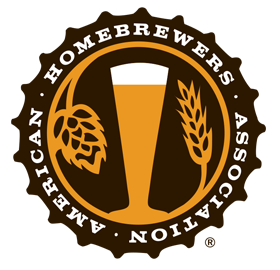
The following beer recipe is featured in the May/June2005 issue of Zymurgy magazine. Access this issue along with the archives with Zymurgy Online!
This article appears in Amahl Turczyn Scheppach's article, "Palmetto State Brewers Open," in the May/June 2005 Issue of Zymurgy magazine.
In 2004, Jim Yeager was awarded Best in Show for his "Big Ass Barleywine" at the Palmetto State Brewers Open, and went on to claim the title of Carolina Brewer of the Year. As a brewer who seeks to "imperial everything," Yeager has had to face the challenge of reduced hop utilization that comes along with high original gravities.
Big Ass Barleywine was brewed with the intentions of it being an American barleywine with a prominent American hop profile, but the subtle hop character that resulted was akin to an English barley wine.
Yeager shared that many who tried his barleywine misinterpreted the hops as English in origin, and the judges even believed his homebrew to be an English barleywine. "For those after a hoppy American barleywine," says Yeager, "my suggestion would be to not be afraid to add more hops in the last 30 minutes."
The following beer recipe is featured in the May/June2005 issue of Zymurgy magazine. Access this issue along with the archives with Zymurgy Online!
This article appears in Amahl Turczyn Scheppach's article, "Palmetto State Brewers Open," in the May/June 2005 Issue of Zymurgy magazine.
In 2004, Jim Yeager was awarded Best in Show for his "Big Ass Barleywine" at the Palmetto State Brewers Open, and went on to claim the title of Carolina Brewer of the Year. As a brewer who seeks to "imperial everything," Yeager has had to face the challenge of reduced hop utilization that comes along with high original gravities.
Big Ass Barleywine was brewed with the intentions of it being an American barleywine with a prominent American hop profile, but the subtle hop character that resulted was akin to an English barley wine.
Yeager shared that many who tried his barleywine misinterpreted the hops as English in origin, and the judges even believed his homebrew to be an English barleywine. "For those after a hoppy American barleywine," says Yeager, "my suggestion would be to not be afraid to add more hops in the last 30 minutes."
Ingredients:
- 17.0 lb (7.7 kg) U.K. pale malt
- 0.5 lb (227 g) Belgian caramel Vienna malt
- 1.0 lb (0.45 kg) Belgian aromatic malt
- 0.5 lb (227 g) Caramel Munich malt, 60° L
- 1.0 oz (28 g) pellet Nugget hops, 13% alpha acid (60 min)
- 1.0 oz (28 g) pellet Centennial hops, 10.5% alpha acid (60 min)
- 1.0 oz (28 g) pellet Centennial hops, 10.5% alpha acid (30 min)
- 2.0 oz (56 g) pellet Cascade hops, 4.4% alpha acid (15 min)
- 2.0 oz (56 g) pellet Cascade hops, 4.4% alpha acid (10 min)
- 2.0 oz (56 g) pellet Cascade hops, 4.4% alpha acid (5 min)
- 2.0 oz (56 g) pellet Cascade hops 4.4% alpha acid (2 min)
- 1.25 oz (35 g) whole Cascade hops, 5.75% alpha acid (dry)
- White Labs WLP 001 American ale yeast
- 4.0 oz (13 g) corn sugar to prime
Specifications:
Yield: 5 gallons (19 L)
Original Gravity: 1.107
IBU: 118.7
SRM: 13
Boil Time: 90 minutes
Efficiency: 75%
Directions:
- Mash grains at 150-152°F (66-67°C) for 60 minutes.
- Follow boil schedule as noted in ingredients list.
- Ferment at 65°F (18°C) for two weeks.
- Transfer to secondary and let sit at 67°F (19°C) for at least four weeks.
- You may have to add a little fresh dry yeast at bottling to help bottle condition.
- Photo © 2012 ImipolexG through a creative commons license







Share Post